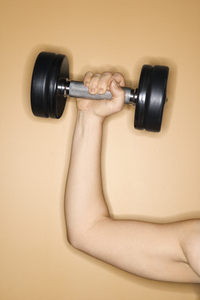
Preventing and Healing Injuries
Understanding the Process
An injury is essentially a part of your body being out of balance. There are several stages in the process of getting back to health. After the initial event that led to the injury there is a period of inflammation where ice, rest and elevation are usually recommended. The key is knowing how long to rest, when and how to resume activities, and it comes from monitoring the inflammation level, seeing how the injury reacts to mild activity. Just rest alone will not assure a full recovery; it is necessary to regain balance, strenghten the area to prevent recurrence. It may be necessary to modify your lifestyle, use different biomechanics, or alter your technique. The injured area will let you know when it is strong enough by tolerating mild activity. Stretching the injured area and the strenghtening the surrounding muscles groups is often required; the body tends to contract as a protective reaction, plus we de-condition without our normal activities.
It is very important to understand the difference between an injury-induced over-reactive inflammatory response, one that sharply increases pain, soreness and swelling, and a beneficial type of response, a blood-infusing, healing oxygenation from the right type of stimulating activity. You turn the corner when you can work out and have a "good type" of soreness, different from the sensitive-to-touch soreness producing sharp pain sensations.
It takes time to get back in balance, usually as long as it took to get out of balance. With overuse injuries, you missed the sub-conscious signals of increasing soreness; we become aware when the injury breaks the surface and gets our attention through pain. Massage is a good way to keep us aware of what our body is telling us, give a warning on inflammatory build-up. Your body decides when it is ready to heal; all we can do is prepare it by getting enough rest, eating healthy, doing alternate exercises and building strength while increasing our flexibility. There is a muscle memory; every injury carries a mental component. For full healing we have to see ourselves getting better, see scar tissue stronger than muscle.
Prevention of injury is vital. Flexibility, conditioning and joint stabilization work are essential for all athletes, especially after the natural elasticity of youth wears off in our twenties. Exercises to strengthen and lengthen surrounding and connecting knee and shoulder muscle groups are essential for lifetime fitness.We ask an incredible amount of work from our knees and shoulders and give nothing in return. Core abdominal and back muscle groups are the foundation under it all; they get tired but never cramp up; they ask to be worked, to become long and strong. They lace together to form the basis, an internal framework that gives balance, grace and fluidity to all our motions. Commit to a balanced, natural lifetime fitness program with core-strenthening and joint stabilization into your routine-- you won't regret it.
Our next web page is Prehab Central, listing activities and articles to keep you in peak fitness!